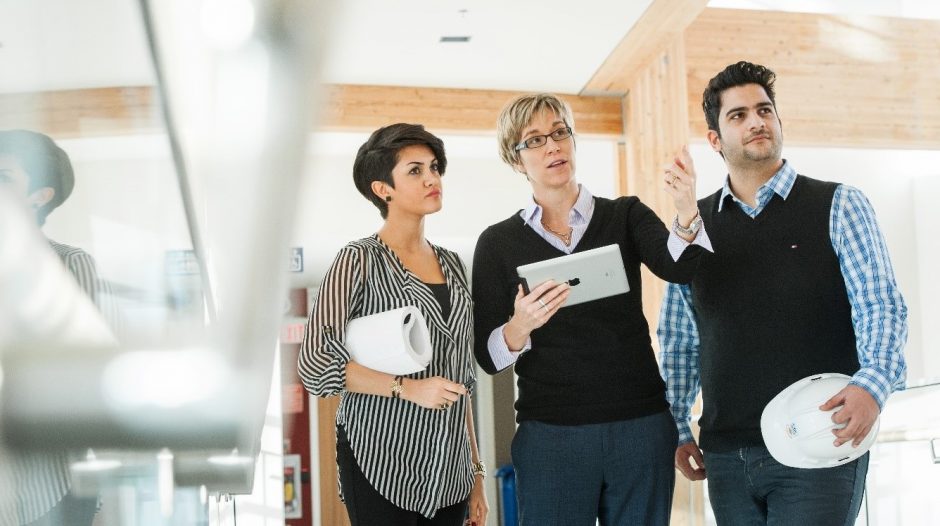
Recent data from Statistics Canada indicates that despite the shortage in skilled engineers in British Columbia, the percentage of female students enrolled in post-secondary engineering programs (55.7%) continues to lag behind other programs such as health (72.7%) and law/social sciences (66.4%). In industry, women make up 12% of engineering jobs in BC and 20% of engineers-in-training (recently graduated category).
UBC Civil Engineering Professor and Dean’s adviser on Equity, Diversity, and Inclusion, Dr. Sheryl Staub-French, along with Dr. Kathy Tarnai-Lokhorst, President of Engineers and Geoscientists BC (EGBC), were recently featured in an article published in Business Vancouver. Both Dr. Staub-French and Dr. Tarnai-Lokhorst note that engineering faces two major gendered challenges dissuading women from studying and working in the field: 1) stereotypes of engineering as a career designed for men, and 2) general misconceptions about the engineering industry.
This lack of women in engineering is related to a number of factors including the presence of positive role models such as family members, curriculum for K-12 and high school students, and dispelling the ‘myth’ that engineering is a male field. Dr. Tarnai-Lokhorst notes that despite the growing number of girls studying science (e.g. Physics 11) in high school (50%), there is a small, but growing, percentage of female students enrolled in post-secondary engineering programs. At the University of British Columbia, women represent 32% of the engineering student body, which is 18% higher than a decade prior. Dr. Staub-French emphasizes that attracting female students goes beyond gender stereotypes. She recalls her own career decision was influenced by her family: “my brother happened to be in mechanical engineering, and my dad said, ‘Why don’t you be an engineer? And I was good at math and said, ‘OK, why not?’” Dr. Staub-French highlights that a further challenge rests in the misconceptions surrounding ‘what engineering actually is’ in K-12 curriculum: “So the challenge is, unlike science, where you hear about it all the time in K-12, you don’t hear about engineering at that level, and I think that’s a huge problem.”
Dr. Staub-French believes that even though the number of women enrolling in post-secondary engineering programs is higher, BC fails to maximize this talent to meet local demand as the province suffers from one of the lowest per capita rates of engineering training in Canada. EGBC further notes that 30% of engineers in BC are 55 and older, demonstrating a future skills shortage as engineers head into retirement.
For more details on addressing the gender disparity in engineering, visit the article published in Business in Vancouver featuring Dr. Sheryl Staub-French and Dr. Kathy Tarnai-Lokhorst.
